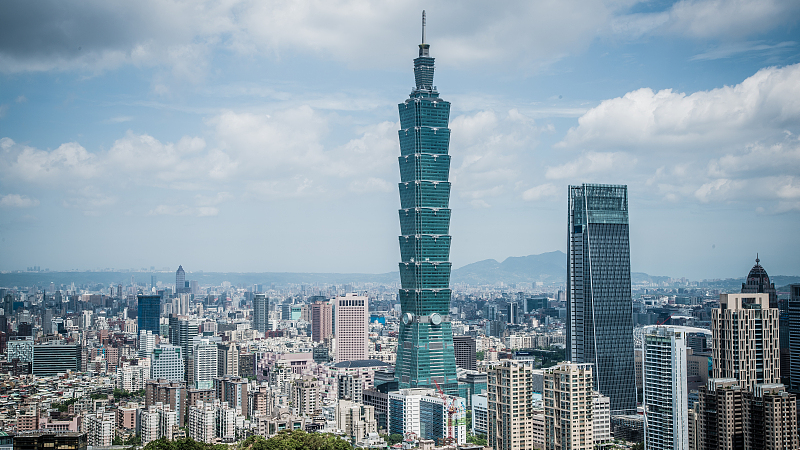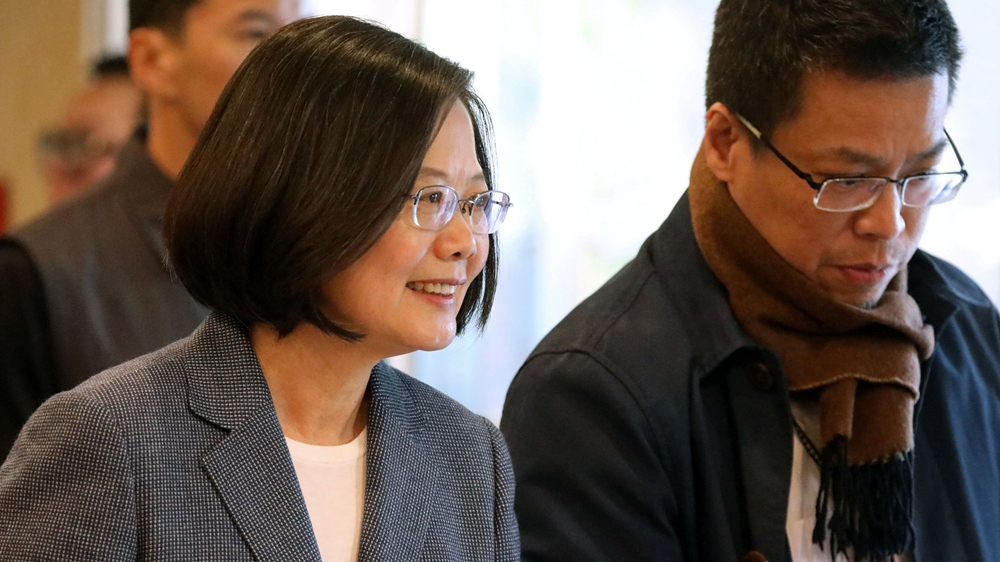
The sky view of Taipei. /CFP
The sky view of Taipei. /CFP
Editor's note: Radhika Desai is a professor of political studies at the University of Manitoba in Canada. The article reflects the author's opinions and not necessarily the views of CGTN.
At first sight, the recently concluded second Economic Prosperity Partnership Dialogue (EPPD) appears part of the long-standing U.S. policy of close economic ties with China's Taiwan region, perhaps representing extra reassurance for the Taiwan authorities at a time of rising tensions with the Chinese mainland.
In fact, a closer look reveals a very different and dangerous reality: Taiwan lies at the economic core of the new U.S. "Cold War" with China and being there could have some very destabilizing implications for the Taiwan region. It also sheds much light on why Beijing has insistently urged Washington to immediately stop elevating relations with Taiwan.
The "New Cold War" has raised diplomatic tensions as the U.S makes one provocation after another, over human rights in Xinjiang Uygur Autonomous Region and Hong Kong Special Administrative Region, the alleged Chinese origin of COVID-19, and most recently by inviting Taiwan to December's "Summit for Democracy."
Military tensions have also been rising as the U.S. and its allies have taken to sending warships through the narrow Taiwan Straits and generally ratcheting up pressure on China by raising the canard of a possible invasion of the island. By May 2021, things had turned sufficiently bad enough to prompt The Economist to label Taiwan region "the most dangerous place on earth."
It is sobering to reflect that The Economist first applied this label to the border between India and Pakistan in 1998 when the long-standing conflict between the two neighbors turned nuclear. Now, however, the "most dangerous place" label applies not to a confrontation between two Asian powers, but to one between the world's major powers. The Economist was clear, moreover, that alarmists in Washington for whom "hostility to China is becoming the default" had created the danger.
However, what the EPPD reveals is the underlying economic logic that drives these diplomatic and military. The U.S. has launched the "New Cold War" on China, to halt China's rise and address America's own economic and technological decline. This has been the crux of U.S. trade and technology wars and, since last year, the EPPD has involved Taiwan centrally in it.

Taiwan leader Tsai Ing-wen (L) leaves after the second live policy address ahead of January's election in Taipei, December 25, 2019. /Reuters
Taiwan leader Tsai Ing-wen (L) leaves after the second live policy address ahead of January's election in Taipei, December 25, 2019. /Reuters
While the EPPD also involves mundane issues such as Taiwan lifting its ban on imports of U.S. meat containing certain additives, it centrally concerns the all-important Taiwan Semiconductor Manufacturing Company (TSMC), though it also drags in other high-technology corporations. TSMC produces 90 percent of the world's chips and both the U.S. and China rely on it, particularly for higher technology chips. COVID-related supply chain disruptions that have halted production of key manufactures around the world have recently highlighted the importance of the firm.
The TSMC has historically pursued a policy of being "everyone's foundry." Now the U.S. is undermining the company's equipoise and autonomy. It is pressuring the TSMC to pick a side in its "New Cold War" by prioritizing supply to the U.S. and ceasing the export of certain chips to China. It has demanded that a number of Taiwan companies, including the TSMC, reveal normally confidential information about sales, raw materials and equipment purchases and clients so it can better calibrate pressure on China. It has also sought to involve TSMC in its newfound resolve to pursue industrial policy and expand the domestic production of chips by twisting the firm's arm to invest in a plant in Arizona (near major U.S. military corporations' production facilities, of course!).
Reportedly, the U.S. is also trying to get Taiwan region to sign a free trade agreement, something it will want to do while its pro-independence leader Tsai Ing-wen is still in office.
It is not at all clear that these moves will achieve their objectives. They are unlikely to halt China's rise. U.S. efforts to restrict chip supply to China will only increase its resolve to develop the necessary technology to produce the chips it needs domestically and, if its rapid recent technological ascent is anything to go by, success cannot be far away. By contrast, while U.S. subsidies to TSMC's Arizona plant are dividing the U.S. electronics industry, it is not clear they will be anywhere near enough to create the domestic capacity the U.S. needs.
What is clear is that these moves will make Taiwan's position economically and politically and geopolitically more vulnerable. Economically, increasing closeness to an economically and militarily belligerent U.S., with or without a free trade agreement can only jeopardize Taiwan's economic and trade ties with the Chinese mainland, which are growing faster than those with the U.S. Politically, American efforts to boost the pro-independence lobby will only divide people in Taiwan region, whose majority supports the status quo, not independence. Geopolitically, by creating conditions for challenging the one-China policy, Beijing's ultimate red line, these moves are going to try Beijing's patience sorely.
(If you want to contribute and have specific expertise, please contact us at opinions@cgtn.com.)

